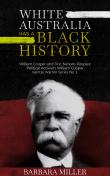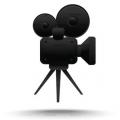
LitPick Review
WATCH THE LITPICK ANIMATED REVIEW VIDEO!
In White Australia Has a Black History, author Barbara Miller recounts the decades-long struggle to restore the basic human rights of Australia's Aborigines. The first third of the book chronicles the life and career of William Cooper. He devoted his life to the cause, using his faith, political aspirations, and influence to bring awareness to the suffering of the Aborigine people. Miller describes the inhumane treatment of these indigenous people ever since Britain established a penal colony on the continent in 1778. Over time, they enacted policies to keep out nations of color while using hateful and even homicidal methods to reduce the Aborigine population whose territory they had infiltrated.
After his death in 1941, William Cooper's work continued through his established Australian Aborigines League (AAL). Miller got involved in the 1970s when activism for this cause drew comparisons to the Civil Rights movement in the United States. The final part of the book chronicles Miller and her husband's trip to key locations in Cooper's history along with the cause's most recent accomplishments.
Opinion:
White Australia Has a Black History is a well-researched, organized, and heartfelt guide to this specific aspect of Australian history. As a born and bred American, my knowledge of Australia is quite limited. So, it was surprising and horrifying to learn about how the history of the Aborigines parallels my country's treatment of indigenous people over the last few hundred years as well as other non-white nationalities. It's a lot of information to swallow, making it more of a solemn, academic read than an entertaining and engaging one.
Miller's narration is written in a textbook style with specific facts, numbers, and dates, particularly in retelling Cooper's story. Once she introduces her personal experience, the book becomes a little more autobiographical while maintaining its professional tone. She talks about how she was arrested for handing out anti-draft pamphlets during the Vietnam era and became one of the few women arrested in Australia on a national service charge. However, she never plays the martyr or the saint to this cause, saving that for Cooper's legacy as well as that of the Aborigines who endured mistreatment over centuries and who now have more of a voice than ever.
The book also contains numerous high-quality photos and screenshots of important documents referenced throughout the text. I recommend this book to history buffs, particularly Australian history buffs, or anyone interested in activism and securing human rights. I would also recommend it to Americans who want to learn more about world history that's not taught in school.


